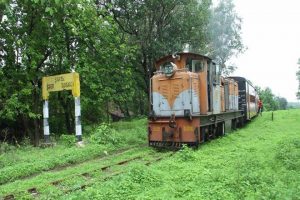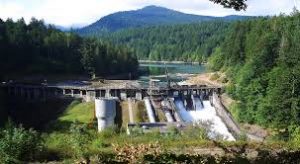Today Current Affairs: 2nd February 2021 for UPSC IAS exams, State PSC exams, SSC CGL, State SSC, RRB, Railways, Banking Exam & IBPS, etc
Table of Contents
Emergency Announced In Myanmar:

The military of Myanmar has taken control of the country and a one-year state of emergency has been announced. Further, State Counsellor Aung San Suu Kyi and other government leaders have been detained.
- The state emergency was announced because the November Elections in 2020 were postponed amid the COVID-19 pandemic and the government was failed in tackling the situation.
- So, the military took over the country in accordance with Article 417 of Myanmar’s constitution.
- Article 417 gives power to the military to take over in times of emergency.
- The military had framed the constitution of Myanmar in 2008 and retains power under the charter at the expense of democratic, civilian rule.
- Military highlights that, there were millions of irregularities in the voter lists in the November 2020 elections in which Suu Kyi’s party had won 396 out of 476 seats. However, the election commission had rejected the claims of the military.
Implications of the military control
- Now in Myanmar, telecommunications have been halted. Internet and phone access have also been blocked.
- The social media accounts of many people have been temporarily suspended.
- Barbed wire roadblocks were set up and the military units have overtaken the government buildings.
- Further, there is a fear of a crackdown on human rights defenders, journalists, and other critics of the military because, even before the military takeover, journalists, free speech advocates, and critics of the military have faced legal actions many times.
Neptune Declaration:

The Maritime body MUI urged the government to take cognizance of the” Neptune Declaration on Seafarer Wellbeing and Crew Change” in order to formulate the Maritime India Vision 2030.
- The “Maritime India Vision 2030” will be formulated by the Ministry of Ports, Shipping and Waterways of India.
Neptune Declaration:
- The Neptune Declaration was signed by more than 450 organizations.
- The declaration highlights the main actions that are required to be taken in order to resolve the crew change crisis.
- The daily lives and wellbeing of seafarers were highly impacted due to the COVID-19 pandemic.
- It led to a humanitarian crisis at sea.
- This declaration has mentioned four main actions that is needful to address the crew change crisis:
- To recognize the seafarers as the key workers and provide them priority access to Covid-19 vaccines.
- To establish and implement the gold standard health protocols which are based on the existing best practice.
- To increase the collaboration between the ship operators and charterers so as to facilitate the crew changes.
- To ensure the air connectivity between the key maritime hubs for seafarers.
Maritime Union of India (MUI):
- The Marine Union of India is the oldest marine office. It represents the Merchant Navy Officers who are its members.
- The office is affiliated with the International Transport Workers’ Federation (ITF), London, United Kingdom.
- It has around 700 unions that represent over 4.5 million transport workers from150 countries.
- The office is also affiliated with the Hind Mazdoor Sabha (HMS), New Delhi.
Pattachitra Art:

Prime Minister Narendra Modi applauded a girl from Odisha named Bhagyashree in his Mann ki Baat program.
- The girl has mastered the art of creating Pattachitra on various themes using soft stones.
- The girl boosted her skill during the lockdowns and created pattachitra artworks on unused bottles, electric bulbs and various glass and plastic materials.
About Pattachitra
- Pattachitra term generally used for traditional, cloth-based scroll painting.
- The art form is based in the states of Odisha and West Bengal.
- The art form is known for the intricate details and the mythological narratives and folktales inscribed in it.
- This is an ancient art form in Odisha which is created for ritual use and as souvenirs for pilgrims to temples.
- These art forms are a component of ancient Bengali narrative art.
- The literal meaning of the word “Pajtta” is “cloth” and “Chitra” means “picture” in Sanskrit.
- The colors used in the Paintings are natural and the paintings are made in the old traditional way by Chitrakaras (Odiya Painter).
- The painting is done on canvas comprising of rich colorful application, creative motifs, and designs.
The theme of the paintings:
- The paintings are based on Hindu mythology.
- It is highly inspired by Jagannath and the Vaishnava sect.
- Thus, the theme of Odia’s painting is kept around Lord Jagannath and the Vaishnava sect.
- The subject matter of the paintings is mythological, religious stories, and folklore.
- The individual paintings of gods and goddesses are done.
- Pattachitra’s style of painting is a mix of both folk and classical elements.
- The dress style in the paintings has Mughal influences.
“The Little Book of Encouragement”:By Dalai Lama

The Tibetan spiritual leader the Dalai Lama have recently launched his new book “The Little Book of Encouragement”. The book comprises of 130 quotes. The book has been edited by Renuka Singh while published by Penguin Random House.
- The Dalai Lama while launching the book highlighted that, he is one among more than seven billion human beings who are alive today amid the COVID-19 pandemic. So, he has committed to promoting human happiness.
- He further highlights that; we think happiness comes from money and power. But little we know the role of the mind or that the key to happiness is inner peace.
- He has asked the readers to discuss the thoughts from the books with friends and put these thoughts in day-to-day life practice.
- He further termed climate change and global warming as a very serious issue, apart from the Covid-19 pandemic.
Dalai Lama’s take on Sino-India ties - He wrote on the Sino-India relation that, both India and China have developed a sense of competition in recent times.
- The countries have a high population and are powerful nations. Yet, they cannot destroy each other and have to live side-by-side.
- Further, on the Tibet issue he suggested the Tibetans consider the Chinese as brothers and sisters than as enemies.
About Dalai Lama:
- Dalai Lama’s title has been given by the Tibetan people to the foremost spiritual leader of the Gelug or “Yellow Hat” school of Tibetan Buddhism.
- Tenzin Gyatso is the current and 14th Dalai Lama.
- He lives in India as a refugee.
- The Dalai Lama is considered to be the successor tulkus.
- The tulkus are considered to be the incarnations of Avalokiteśvara (a Bodhisattva of Compassion).
Aadi Mahotsav:

The Vice President of India, M. Venkaiah Naidu, has inaugurated the Aadi Mahotsav at Dilli Haat in New Delhi.
Highlights
- The festival is being organized at Dilli Haat
- It comprises the display and sale of tribal art & craft, medicine, cuisine, and folk performances.
- The festival will be participated by some thousand tribal artisans, artists, and chefs from across the 20 States of the country.
- The tribal communities will provide a glimpse of their rich traditional culture.
- The festival is being organized under the Ministry of Tribal Affairs.
- Under the ministry, TRIFED has been working to improve the income and livelihoods of the tribal people besides preserving their way of life and traditions.
About Aadi Mahotsav:
- It is a National Tribal Festival that was inaugurated on February 1, 2020.
- The festival will continue till February 15, 2021.
- The Aadi Mahotsav is the celebration of the Spirit of Tribal Culture, Crafts, Cuisine, and Commerce.
- This initiative runs successfully since 2017.
- It is an attempt to familiarise the people with the rich and diverse craft, the culture of the tribal communities from across the country.
- The festival is organized under the theme: “Celebration of the Spirit of Tribal Culture, Cuisine and Commerce”.
Mega Investment Textiles Parks (MITRA):

The Finance Minister, Nirmala Sitharaman, announced during the Union Budget 2021 presentation that the Government has proposed a “Mega Investment Textiles Parks (MITRA) scheme”.
Highlights
- The scheme will enable the textile industry to become globally competitive.
- It will help the industries to attract large investments and boost employment generation besides boosting the exports.
- The scheme will help in creating a world-class infrastructure with plug and play facilities. This in turn will create global champions in exports.
- MITRA scheme will be launched in addition to the Production Linked Incentive Scheme (PLI).
Stardust 1.0:

Stardust 1.0 was launched on Jan 31st from Loring Commerce Centre in Maine, US.
- It has become the first commercial space launch powered by biofuel, which is non-toxic for the environment as opposed to traditionally used rocket fuels.
- Stardust 1.0 is a launch vehicle suited for student and budget payloads.
Biofuels:
- Any hydrocarbon fuel that is produced from an organic matter (living or once-living material) in a short period of time (days, weeks, or even months) is considered a biofuel.
- Biofuels may be solid, liquid, or gaseous in nature.
- Solid: Wood, dried plant material, and manure.
- Liquid: Bioethanol and Biodiesel.
- Gaseous: Biogas.
Waghai-Bilimora Heritage Line:

The Western Railway has decided to not stop the services of three trains, including the 107-year-old narrow gauge heritage train between Vaghai and Bilimora, in Gujarat permanently.
- The other two narrow gauge trains run between Miyagam, Choranda and Malsar, and Choranda junction and Moti Karal.
- In rail transport, track gauge or track gage is the spacing of the rails on a railway track.
- The Ministry of Railways, previously issued a letter to the Western Railway ordering permanent closure of 11 “uneconomic branch lines” and narrow gauge sections of the Western Railway, including three from Gujarat.
About the Waghai-Billimora Train:
- It started in 1913, was a remnant of the Gaekwad dynasty who ruled the princely state of Baroda. Tribal people from the interior commute by this train regularly.
- The train covers a distance of 63 kilometers.
- At the instance of Gaekwad rulers, the British laid railway tracks and it was operated by Gaekwad Baroda State Railway (GBSR) owned by Sayajirao Gaekwad III.
- The Gaekwad jurisdiction was spread across parts of Saurashtra, Mehsana in north Gujarat, and Bilimora in South Gujarat.
- The founder of the dynasty was Damaji I who had risen to power by 1740. The last Gaekwar, Sayaji Rao III, died in 1939.
- For about 24 years the train was run by a steam engine, which was replaced by a diesel engine in 1937.
- In 1994, the original steam engine was put on display at Churchgate Heritage Gallery in Mumbai.
- This was much before the Western Railway came into existence in 1951 with the merger of the Bombay, Baroda & Central India Railway, the Saurashtra, Rajputana, and Jaipur state Railways.
- The 63-km Billimora-Vaghai and the 19-km Choranda-Moti Karal routes are among those five routes the Indian Railways had proposed to be preserved as “industrial heritage” in 2018.
Foreign Contribution (Regulation) Act, 2010:

The Ministry of Home Affairs (MHA) issued new regulating guidelines to banks under Foreign Contribution (Regulation) Act, 2010.
- It states that the donations received in Indian rupees by non-governmental organizations (NGOs) and associations from any foreign source (even if that source is located in India at the time of such donation) should be treated as a foreign contribution.
About the New Guidelines:
- Widening the Scope of Foreign Contribution: Under the issued regulations, donations given in Indian rupees (INR) by any foreigner/foreign source including foreigners of Indian origin like Overseas Citizen of India (OCI) or Person of India Origin (PIO) cardholders should also be treated as foreign contribution.
- Meeting the Standards of FATF: The guidelines mandate that good practices should be followed by NGOs in accordance with the standards of the global financial watchdog- Financial Action Task Force (FATF).
- It asked NGOs to inform the Ministry about “suspicious activities” of any donor or recipient and “take due diligence of its employees at the time of recruitment.”
Ageing Water Infrastructure: An Emerging Global Risk: UN Report:

According to a United Nations (UN) report “Ageing water infrastructure: An emerging global risk”, over 1,000 large dams in India will be roughly 50 years old in 2025 and such ageing embankments across the world pose a growing threat.
- The report, compiled by Canada-based Institute for Water, Environment and Health, says the world is unlikely to witness another large dam-building revolution as in the mid-20th century, but dams constructed then will inevitably be showing their age.
- The analysis includes dam decommissioning or ageing case studies from the USA, France, Canada, India, Japan, and Zambia and Zimbabwe.
Global Scenario:
- Most of the 58,700 large dams worldwide were constructed between 1930 and 1970 with a design life of 50 to 100 years.
- By 2050, most people on Earth will live downstream of tens of thousands of large dams built in the 20th century, many of them already operating at or beyond their design life.
- At 50 years, a large concrete dam “would most probably begin to express signs of ageing.”
- Ageing signs include increasing cases of dam failures, progressively increasing costs of dam repair and maintenance, increasing reservoir sedimentation, and loss of a dam’s functionality and effectiveness – “strongly interconnected” manifestations.
- 32,716 large dams (55% of the world’s total) are found in just four Asian countries: China, India, Japan, and South Korea – a majority of which will reach the 50-year threshold relatively soon.
India Scenario:
- India is ranked third in the world in terms of building large dams.
- Of the over 5,200 large dams built so far, about 1,100 large dams have already reached 50 years of age and some are older than 120 years.
- The number of such dams will increase to 4,400 by 2050.
- This means that 80% of the nation’s large dams face the prospect of becoming obsolete as they will be 50 years to over 150 years old.
- The situation with hundreds of thousands of medium and minor dams is even more dangerous as their shelf life is even lower than that of large dams.
Strengthening Teaching-Learning and Results For States (STARS) project.:

Ministry of Education, Department of Economic Affairs (DEA), and World Bank have signed an agreement for the financial support worth Rs 5718 crore towards the implementation of the Strengthening Teaching-Learning and Results for States (STARS) project.
About the Project:
- STARS stands for Strengthening Teaching-Learning and Results for States Program (STARS).
- STARS project would be implemented as a new Centrally Sponsored Scheme under the Department of School Education and Literacy, Ministry of Education.
- It is a project to improve the quality and governance of school education in six Indian states.
- Six states are- Himachal Pradesh, Kerala, Madhya Pradesh, Maharashtra, Odisha, and Rajasthan.
- Some 250 million students (between the age of 6 and 17) in 1.5 million schools, and over 10 million teachers will benefit from the program.
- Focusing more directly on the delivery of education services at the state, district and sub district levels by providing customized local-level solutions towards school improvement.
- Addressing demands from stakeholders, especially parents, for greater accountability and inclusion by producing better data to assess the quality of learning; giving special attention to students from vulnerable section.
- Equipping teachers to manage this transformation by recognizing that teachers are central to achieving better learning outcomes.
- Investing more in developing India’s human capital needs by strengthening foundational learning for children in classes 1 to 3 and preparing them with the cognitive, socio-behavioral, and language skills to meet future labor market needs.
Main components of the project:
Contingency Emergency Response Component (CERC):
- The project includes a Contingency Emergency Response Component (CERC) under the National Component which would enable it to be more responsive to any natural, man-made, and health disasters.
- It will help the government respond to situations leading to loss of learning such as school closures/infrastructure damage, inadequate facilities, and the use of technology for facilitating remote learning, etc.
PARAKH:
- A major component of the project is the establishment of PARAKH (Performance Assessment, Review, and Analysis of Knowledge for Holistic Development) as a National Assessment Centre.
- Included in the National Education Policy 2020, this autonomous institution under the Union Education Ministry will set norms for student assessment and evaluation for all school boards across the country, most of which currently follow norms set by State governments.
- It will also guide standardised testing to monitor learning outcomes at the State and national levels, according to the NEP.




